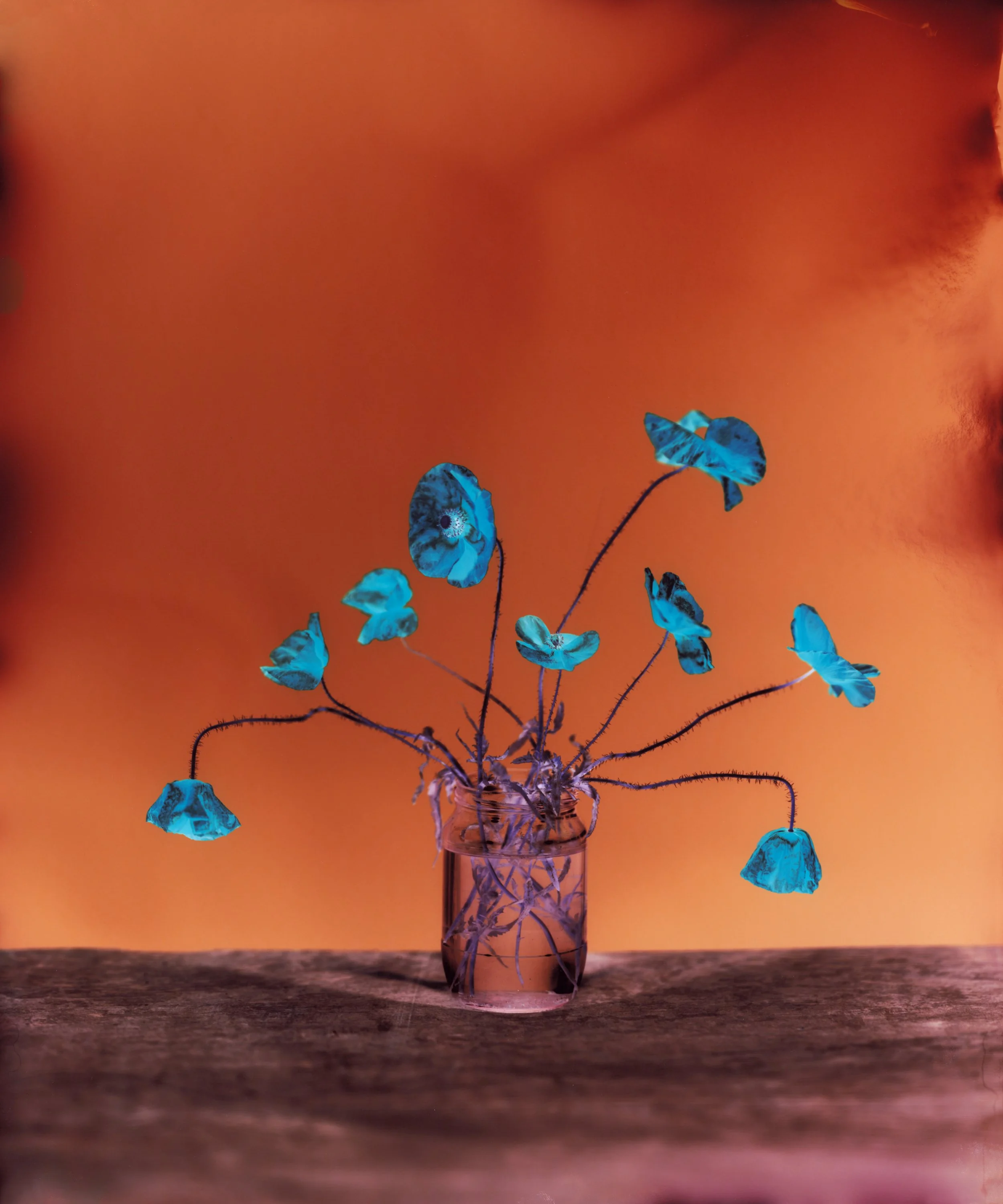The photographs were made during the spring, summer and early autumn of 2020. Each day during the Covid lockdowns, Barry would go for a walk with his daughter around their neighbourhood. They began a tradition of picking wildflowers—California poppy, cow parsley, cornflower, Queen Anne’s lace, hogweed, field scabious, dove’s foot crane’s bill, meadow buttercup—bringing them home to arrange in vases to be photographed.
‘This work is, at its heart, about family. The daily walks with my pregnant partner and daughter, the quiet ritual of gathering and arranging flowers together, became a shared act of noticing and creating amidst the uncertainty. Though the photographs speak to process and transformation, they are also rooted in the intimacy of those shared days, evidence of a bond strengthened through curiosity, collaboration and care.’
Barry initially constructed a camera obscura and darkroom out of his garden shed, then when Covid 19 restrictions lifted he set up a studio in a disused gym in town. Some of the images were created by producing a simple paper negative, others using a complex colour reversal process he pioneered. All of the images were captured directly onto photo sensitive chromogenic paper to create the final large-scale works. During these processes, as the ambient temperature in the room shifted and the chemical concentration changed, the colour balance and exposure values would fluctuate influencing the resulting image—making each precariously unique and impossible to replicate.
‘These are representations of flowers, of course, but they are also signs of complex improvisations with chemicals, paper, light, and time. I do not know what the image is going to be like at the start of the process: each one is a small revelation. Sometimes the strangeness of the result positions the everyday motif of the flower within a new hybrid space between the chemical and natural: a fusion of the tradition of art that celebrates the transience of flowers, and a process that steals them away into an uncanny, chromatic image of an apparently permanent and artificial afterlife.’









